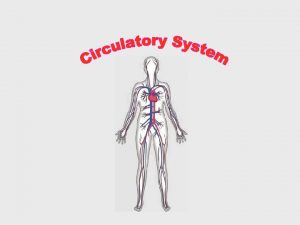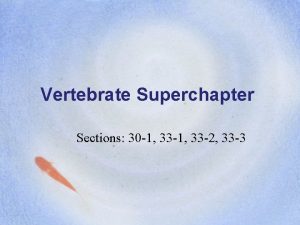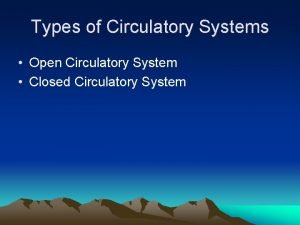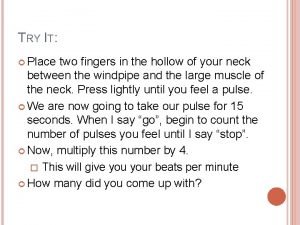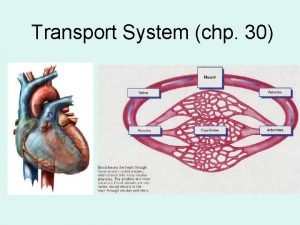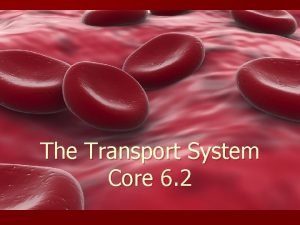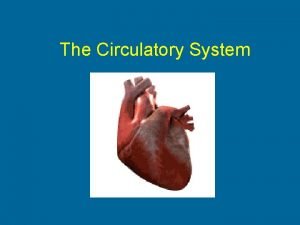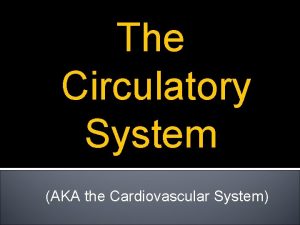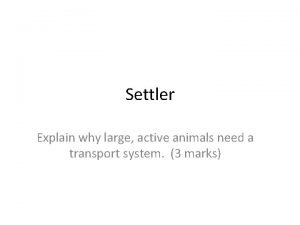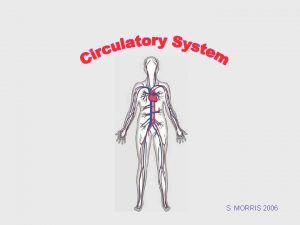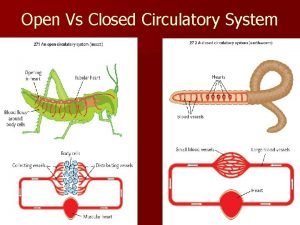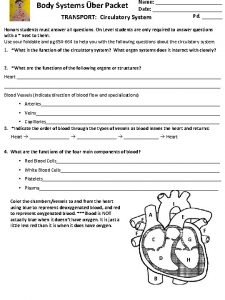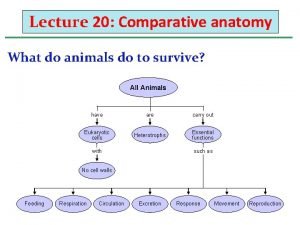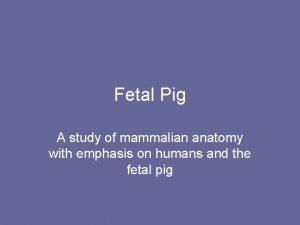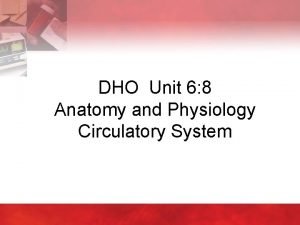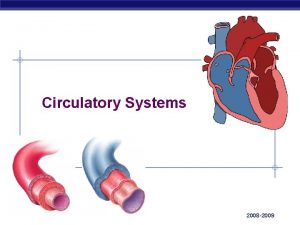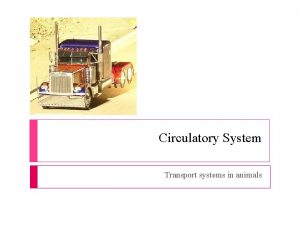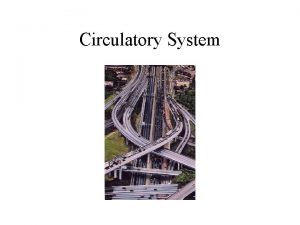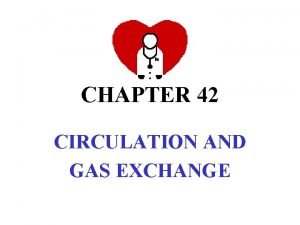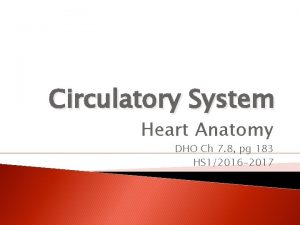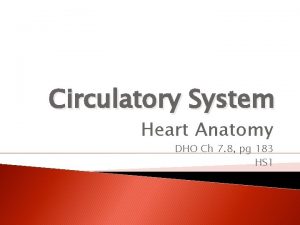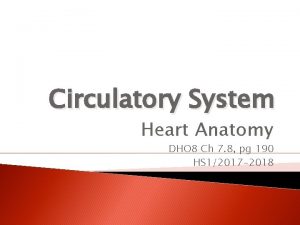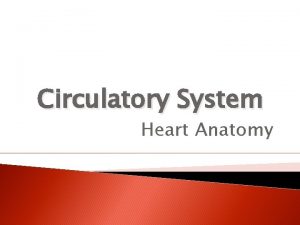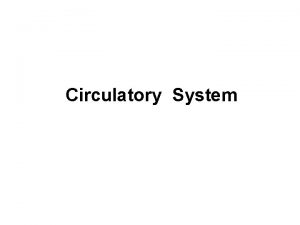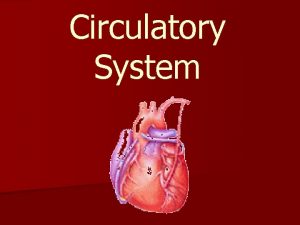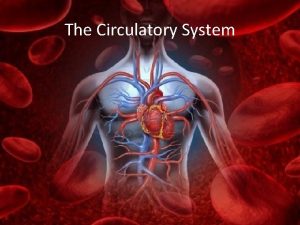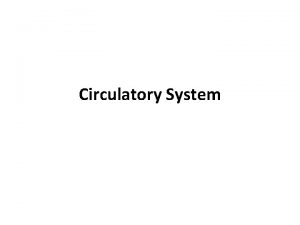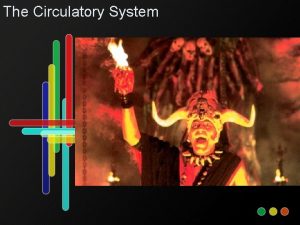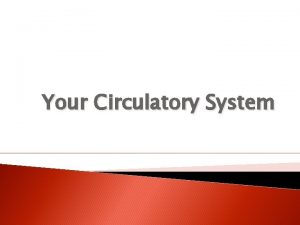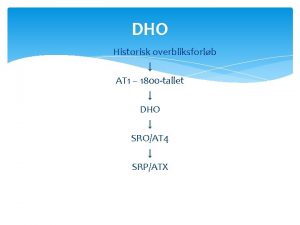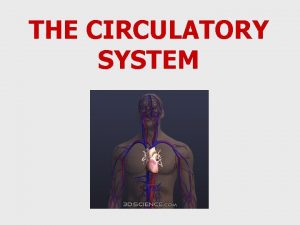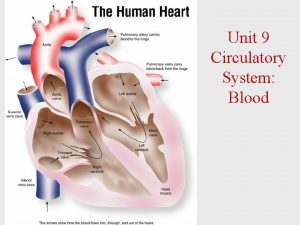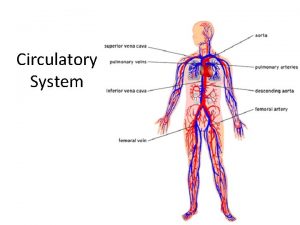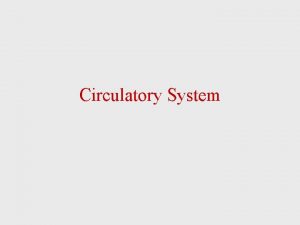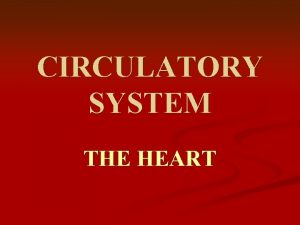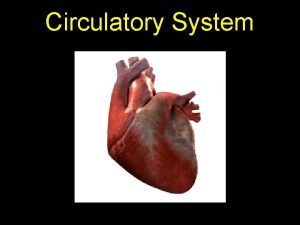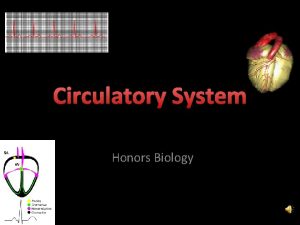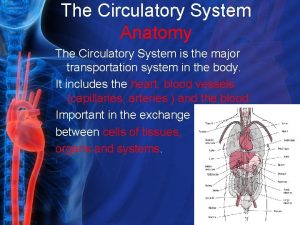Circulatory System Heart Anatomy DHO Ch 7 8































- Slides: 31

Circulatory System Heart Anatomy DHO Ch 7. 8, pg 183 HS 1

Circulatory System Facts: q. AKA CV or cardiovascular system q. Transportation system of the body q. Transports O 2 and nutrients to cells; CO 2 & metabolic materials away from cells q. Structures include the heart, blood vessels, and blood qhttps: //www. youtube. com/watch? v=JA 0 Wb 3 gc 4 m. E

The Heart

Heart: q. Muscular, hollow organ q“Pump” of the body q. Weighs <l pound, size of a closed fist q. Located in the mediastinal cavity (between the lungs, behind sternum, & above diaphragm)

Test Your Knowledge � The a) b) c) d) heart is best described as a : Muscular pump Storage chamber Message center Filtration unit Correct Answer: A

Test Your Knowledge � The a) b) c) d) heart is about the size of a/an: Egg Apple Peanut Pumpkin Correct Answer: B

Test Your Knowledge � Which of these descriptions of the heart’s location is correct? a) Posterior to the sternum and superior to the diaphragm b) Anterior to the lungs and medial c) Superior to the diaphragm and laterally to the right of the sternum d) Inferior to the clavicle and diaphragm Correct answer: A

3 layers of tissue form the heart: �Endocardium �Myocardium �Pericardium

1. Endocardium – �smooth layer of cells �lines inside of the heart and is continuous with inside of the blood vessels �allows for smooth flow of blood.

2. Myocardium – muscular middle layer

3. Pericardium – double layered membrane or sac that covers outside of the heart filled with pericardial fluid

Pericardial fluid (lubricating fluid) �fills the space between the 2 layers �prevents friction & damage to the membranes as the heart contracts

Test Your Knowledge � The a) b) c) d) e) endocardium. . Is also known as the parietal pericardium Is a layer of cardiac muscle Is the visceral pericardium Line the heart chambers Is the pacemaker of the heart Correct answer: D

4 Chambers of the heart: 1. 2 upper chambers=atria/atrium 2. 2 lower chambers=ventricles

Right Sided Chambers of the heart – v. Right Atrium (RA)– receives deoxygenated blood as it returns from the body cells v. Right Ventricle (RV)– receives blood from RA & pumps it into pulmonary artery to be carried to the lungs for O 2

Left Sided Chambers of the heart – v. Left Atrium (LA)– receives oxygenated blood from the lungs v. Left Ventricle (LV)– receives blood from LA & pumps it into aorta for transport to body cells

Test Your Knowledge When blood leaves the left atrium, where does it go next? a) Aorta b) Left ventricle c) Right atrium d) Pulmonary artery � Correct Answer: B

Septum Muscular wall that separates heart into R and L sides o It prevents blood from moving between R and L sides o

Septum o Upper part – interatrial septum o Lower part – interventricular septum

Test Your Knowledge � What would happen if a small hole developed in the septum? a) The heart would stop pumping b) Blood would move between the right and left sides of the heart c) The blood from the pulmonary artery would enter the aorta d) Blood would not flow into the coronary arteries Correct answer: B

Septal Myectomy https: //www. youtube. com/watch? v=ux 7 i. NMMbf. G 0

4 Valves- One way valves keep the blood flowing in the right direction 2 Types of valves: Atrioventricular (AV) and Semilunar

Valves of the Heart

2 AV Valves – (Separate atria & ventricles) �Tricuspid �Bicuspid (Mitral)

v. Tricuspid , AV Valves – valve – between RA and RV, closes when RV contracts v. Allows blood to flow to lungs & prevents it from flowing back into RA

AV Valves – v. Bicuspid (Mitral) Valve – between LA and LV, closes when LV contracts v. Allows blood to flow into aorta & prevents it from flowing back into LA

2 Semilunar Valves– �Pulmonary �Aortic

Semilunar Valves – v. Pulmonary semilunar valve – between RV and pulmonary artery, closes when RV has finished contracting v. Allow blood to flow into pulmonary artery & prevents blood from flowing back into RV

Semilunar Valves – v. Aortic Semilunar Valve – between LV and aorta, closes when LV has finished contracting v. Allows blood to flow into aorta & prevents blood from flowing back into LV

Test Your Knowledge � After blood leaves the right atrium, what valve prevents back flow? a) Tricuspid b) Mitral c) Pulmonary d) Aortic Correct answer: A

Test Your Knowledge � Arrange the following valves in the order in which an RBC would pass through them after returning to the heart from the left arm. 1) Aortic semilunar 2) bicuspid/mitral 3) Pulmonary semilunar 4) tricuspid a) b) c) d) 1, 2, 3, 4 2, 3, 1, 4 3, 1, 2, 4 4, 3, 2, 1 Correct Answer: D
 Digestive system respiratory system and circulatory system
Digestive system respiratory system and circulatory system Tiny air sacs at the end of the bronchioles
Tiny air sacs at the end of the bronchioles Circulatory system and respiratory system work together
Circulatory system and respiratory system work together 7:11 digestive system diagram
7:11 digestive system diagram Circulatory system steps in order
Circulatory system steps in order Section 30-1 the chordates answer key
Section 30-1 the chordates answer key Heart fish
Heart fish Clam open circulatory system
Clam open circulatory system Sheep circulatory system
Sheep circulatory system Carbon dioxide levels in the blood
Carbon dioxide levels in the blood Closed circulatory system
Closed circulatory system Jobs of the circulatory system
Jobs of the circulatory system Smallest blood vessel
Smallest blood vessel Double circulatory system
Double circulatory system How circulatory system work
How circulatory system work What makes up the circulatory system
What makes up the circulatory system The actual exchange of gases occurs at the site of the
The actual exchange of gases occurs at the site of the Single circulation and double circulation
Single circulation and double circulation Phylum arthropoda characteristics
Phylum arthropoda characteristics Crustaceans characteristics
Crustaceans characteristics Open circulatory system vs closed
Open circulatory system vs closed Circulatory system foldable
Circulatory system foldable Invertebrate circulatory system
Invertebrate circulatory system Fetal pig taxonomy
Fetal pig taxonomy Unit 6:8 circulatory system
Unit 6:8 circulatory system Open circulatory system
Open circulatory system Open circulatory system
Open circulatory system Circulatory system function
Circulatory system function Function of the circulatory system
Function of the circulatory system Arthropods circulatory system
Arthropods circulatory system Difference between open and closed circulatory system
Difference between open and closed circulatory system Chapter 34 circulation in humans concept mapping answer key
Chapter 34 circulation in humans concept mapping answer key




